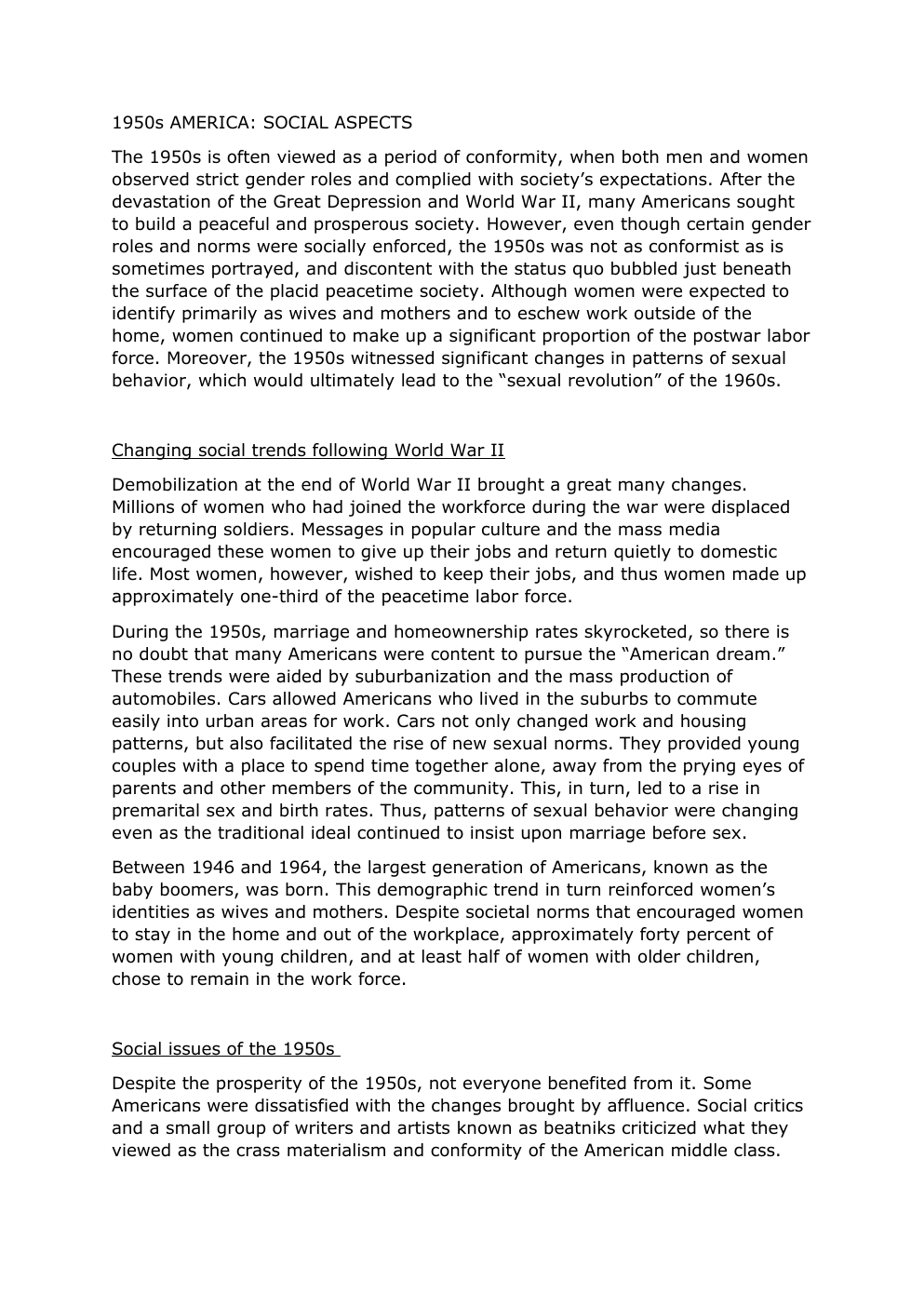1950s AMERICA: SOCIAL ASPECTS
Publié le 30/04/2023
Extrait du document
«
1950s AMERICA: SOCIAL ASPECTS
The 1950s is often viewed as a period of conformity, when both men and women
observed strict gender roles and complied with society’s expectations.
After the
devastation of the Great Depression and World War II, many Americans sought
to build a peaceful and prosperous society.
However, even though certain gender
roles and norms were socially enforced, the 1950s was not as conformist as is
sometimes portrayed, and discontent with the status quo bubbled just beneath
the surface of the placid peacetime society.
Although women were expected to
identify primarily as wives and mothers and to eschew work outside of the
home, women continued to make up a significant proportion of the postwar labor
force.
Moreover, the 1950s witnessed significant changes in patterns of sexual
behavior, which would ultimately lead to the “sexual revolution” of the 1960s.
Changing social trends following World War II
Demobilization at the end of World War II brought a great many changes.
Millions of women who had joined the workforce during the war were displaced
by returning soldiers.
Messages in popular culture and the mass media
encouraged these women to give up their jobs and return quietly to domestic
life.
Most women, however, wished to keep their jobs, and thus women made up
approximately one-third of the peacetime labor force.
During the 1950s, marriage and homeownership rates skyrocketed, so there is
no doubt that many Americans were content to pursue the “American dream.”
These trends were aided by suburbanization and the mass production of
automobiles.
Cars allowed Americans who lived in the suburbs to commute
easily into urban areas for work.
Cars not only changed work and housing
patterns, but also facilitated the rise of new sexual norms.
They provided young
couples with a place to spend time together alone, away from the prying eyes of
parents and other members of the community.
This, in turn, led to a rise in
premarital sex and birth rates.
Thus, patterns of sexual behavior were changing
even as the traditional ideal continued to insist upon marriage before sex.
Between 1946 and 1964, the largest generation of Americans, known as the
baby boomers, was born.
This demographic trend in turn reinforced women’s
identities as wives and mothers.
Despite societal norms that encouraged women
to stay in the home and out of the workplace, approximately forty percent of
women with young children, and at least half of women with older children,
chose to remain in the work force.
Social issues of the 1950s
Despite the prosperity of the 1950s, not everyone benefited from it.
Some
Americans were dissatisfied with the changes brought by affluence.
Social critics
and a small group of writers and....
»
↓↓↓ APERÇU DU DOCUMENT ↓↓↓
Liens utiles
- Droit social: La Convention collective
- The impact of social media on our societies through the changes in lifestyles, diversity and human rights.
- Le contrat social de Rousseau extrait 7: la volonté générale
- Essay sur la situation social en Guadeloupe
- L'homme est-il un animal social



















